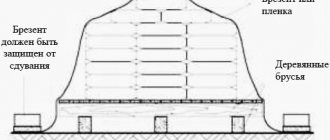Organizations specializing in the sale of food products are the most complex in the field of trade. This is due to various difficulties in organizing a business on the part of the law, which places high demands on retail stores. This area is actively developing and, according to experts, in the near future those stores that are focused on the middle and lower price segment will become the most sustainable.
Any trading activity is subject to trade rules, which are approved by the Government of the Russian Federation.
Qualified lawyers on our portal have the opportunity, free of charge, to provide advice and explain what trading rules exist and the changes made in 2020.
Basic Rules
Selling goods is the most popular type of business chosen by entrepreneurs. Each category of goods (food, non-food) has its own rules and characteristics. At the legislative level, the Government adopts and publishes requirements that every seller must know and use in their work activities.
The 2020 rules for the sale of food products for retail stores imply the procedure for the preparatory process before sale. The following are the 2020 requirements that must be met throughout the entire sales process for retail stores:
- Retail pavilions are required to have a legal form, have an address, name, sign with operating hours and activity profile.
- Preparation. All products must be placed on the counter before sales begin. The goods must be sorted by type, type and department, observing the storage regime. The presence of price tags and a brief description of the goods is mandatory.
- Sellers. Employees of the food products department are required to have a medical book, uniform, neat appearance and a headdress. Each employee is required to wear an information plate indicating the organization, position held and the employee’s full name.
- Goods. The main requirements include expiration date, storage conditions, sales procedure, price, etc.
- Other requirements. Basically, these include those conditions that are aimed at respecting consumer rights - scales, cash registers, the presence of a complaint book and a consumer corner.
These are just the basic rules and requirements that are put forward for the sale of food products by retail stores. Next, sanitary rules, norms, standards and changes that came into force in 2020 will be discussed.
SanPiN -94 Sanitary rules for food trade enterprises
3.5.11. Order departments (tables) in food trade enterprises must have the following set of premises: premises for receiving and issuing orders, picking, packaging, expedition with refrigeration units for storing perishable products and a washbasin for washing hands.
Sellers are required to monitor the quality of the food products they sell. If a change in the quality of food products is detected, it is necessary to delay their sale and immediately inform the administration about this in order to resolve the issue of the possibility of further sale of the products.
Operating rules for the trade pavilion
Separately, it is necessary to note those rules and regulations that apply to the organization of the work of a trade pavilion. Based on the above, the store must have an external sign that contains information about the organization. Regarding the rules of internal organization, the store manager is obliged to post department guidelines for the consumer, namely:
- signs about the location of sections or groups of goods;
- Full name of sales department employees;
- Price list for services provided in the store (if any).
Also in the consumer corner, it is necessary to provide customers with information about the rules for retail sales of products and contact information about organizations that regulate the activities of the store.
It is necessary to pay attention that if the pavilion sells raw meat, then an information poster about cutting meat according to its grades must be placed in a visible place for the buyer.
It is worth considering in detail the design of price tags for products. So, in 2020, the following requirements apply to the design of price tags:
- Products packaged in a store must have an insert indicating the name, weight and price. The packaging must contain the same standards.
- The details of the organization indicated on the price tag must be easy to read and certified by the seal of the company and the signature of the employee who is financially responsible.
- Having scales in the store is a must. Any measuring equipment must be in good working order and have inspection marks from the appropriate authority.
- A product that has some kind of defect or shortcoming must be equipped with an information plate. When purchasing this product, the customer must also be informed orally about its defect.
Thus, by observing all the standards required for the sale of food products in 2020, you can protect yourself from unscheduled inspections by Rospotrebnadzor, and always keep the organization’s reputation at a high level.
Sanpin for non-food trade
When designing food trade enterprises and reconstructing existing enterprises, it is necessary to take into account sanitary and hygienic standards and rules for the organization of work. 3.12.2. The microclimate of the enterprise must comply with the requirements of the “Sanitary Standards for the Microclimate of Industrial Premises”, approved. deputy Chief State Sanitary Doctor of the USSR 03/31/86, No. 4088-86. Parameters of air temperature in the working area, relative air humidity and air speed are presented in Table No. 4.
Chief State Sanitary Doctor of the Russian Federation 04/06/2003), where Table No. 2 shows the standardized indicators of natural, artificial and combined lighting depending on the purpose of the premises. So, for example, for the trading floors of furniture and sports stores, the minimum level of artificial illumination is 200 lux, for self-service stores - 400 lux. Illumination and ventilation You should know that if a computerized cash register is installed at the cashier’s workplace, then artificial illumination levels should not be lower than 400 lux (SanPiN 2.2.2/2.2.4.1340-03 “Hygienic requirements for personal electronic computers and organization of work ", approved by the Chief State Sanitary Doctor of the Russian Federation on May 30, 2003).
Sanitary standards and requirements

The main act that regulates the rules for facilities where goods are sold is SanPiN No. 2.3.5. 021-94 “Sanitary rules for food trade enterprises.” It contains generalized rules of other legislative documents: SNiPs, GOSTs, regulations, etc. These standards remain in effect in 2020. Rospotrebnadzor monitors compliance with all SanPiN requirements.
There are standards that apply to all companies involved in the food trade: warehouses, sales bases, storage facilities, retail and wholesale stores, etc. In the case of designing a new facility or reconstructing old retail premises, it is necessary to adhere to SanPiN. Only in agreement with Rosprotrebnadzor can new facilities be put into operation.
All standards of the above document are divided into “cut-off” and “compliance” standards. From a legal perspective, cut-off standards make it difficult to open retail stores. And “compliance standards” allow for proper modifications to be made to the premises in order to meet all the requirements and open a retail pavilion.
Prohibited:
- Placing fish stores with a total area of more than one thousand square meters in residential buildings on the ground or second floors.
- It is prohibited to load or unload goods near windows or entrances to the house. These actions should be carried out only from the end of a residential building that does not have window openings, on the side of the road, if the store has special premises equipped for this.
- It is strictly prohibited to carry out night delivery, loading and unloading of goods into stores located in a residential building. If complaints are received from residents, this will be the reason for a visit from the inspection body.
If violations are detected, the organization may be subject to penalties ranging from five minimum wages and above. If serious or repeated violations are detected, Rospotrebnadzor has the right to suspend the operation of a retail outlet for three months or close the store altogether.
Most of the requirements and rules of SanPiN and SNiP refer to “compliance standards”. The implementation of all of them depends on the knowledge, experience and integrity of the organization.
You can obtain complete information about all the rules for the sale of food products in force in 2020 from the qualified lawyers of our portal. Employees will answer all your questions around the clock online free of charge.
Product storage. General provisions.
Boxes of goods must be stored on pallets; storing boxes on the floor is prohibited.
Warehousing is carried out in accordance with the warehousing flow sheet approved by the head of the organization.
The technological map of storage is carried out in the form of a warehouse plan, on which the following should be noted: locations and sizes of stacks; passages for people; access roads of railway and road transport; routes of movement of lifting and transport equipment, areas of their operation, parking place; places where vehicles are installed for loading and unloading, etc.
Warehousing of goods on pallets is carried out in stacks or on racks.
The maximum length of a stack or rack should not exceed 20-30 m. In stacks and racks, breaks and passages for lifting and transport equipment and people should be organized every 20-30 m.
The height of storage of goods or packaging materials is determined based on the height of the room, the load on the floors, technical characteristics and means of mechanization, technological rules and storage conditions.
Storing in 2-3 tiers of stacks is allowed, provided that the boxes on the lower pallet are not subject to deformation and are laid in accordance with the manufacturers' schemes for placing goods on pallets.
To prevent damage to the lower tier, it is imperative to use cushioning material (cardboard, hardboard or plywood). Between the upper and lower pallets with cigarettes, a gasket is required
Multi-tiered storage of bulky, heavy goods, as well as goods in fragile containers that may not withstand the load of the upper rows is not allowed.
Methods for laying boxes must ensure the stability of the stacks and boxes contained in them; the possibility of mechanized dismantling of stacks and lifting of goods using mounted grippers of lifting and transport equipment; safety of those working on or near the stack; the possibility of using and normal functioning of protective equipment for workers and fire fighting equipment; circulation of air flows during natural or artificial ventilation of closed warehouses, compliance with the requirements for security zones of power lines, utility lines and energy saving.
Boxes in pallets placed for storage must be secured to prevent them from moving, sliding or falling.
Fixation of boxes when storing the first tier of the stack is ensured by using the correct placement of boxes on a pallet, according to the goods stacking diagrams.
When storing goods above the first tier of a stack or rack, the goods must be secured with stretch film.
The boxes must be stored at a height of at least 14.5 cm from the floor with intervals for air circulation.
The goods on the pallet should not protrude beyond the pallet by more than 20 mm on each side; for tobacco products this distance can be up to 50 mm.
The weight of goods on a pallet must not exceed the pallet's carrying capacity.
Boxes with goods are stored strictly with the flaps facing up.
Each pallet must have a pallet label indicating:
· product names (SKU);
· maximum allowed price (MRP)/expiration date.
Storage must be organized in such a way that each pallet label is accessible.
Products are accounted for by brands/styles/promotions/MRP/expiration date.
When placing goods in warehouse premises, the dimensions of the indents should be:
· distance from walls and protruding parts of walls along the perimeter of the warehouse (columns, supports, etc.) – 1 meter;
· from heating devices – 1 m;
· from lighting sources – 0.5 m;
· from the floor – 14.5 cm;
The distance between rows of stacks is determined taking into account the possibility of installing containers in a stack, removing them from the stack using load-handling devices of the mechanization equipment used and ensuring fire breaks.
The width of the passages should be:
· for technological passages between pairs of stacks - at least 1 m;
· for the operation of loaders – 3.5 meters;
· for the use of hydraulic trolleys – 2.5 meters.
The gaps should be:
· between boxes – 0.02 m;
· between the pallets of the first tier of the stack and on the racks – 0.05-0.10 m;
· between pallets in a two-tier stack – 0.15-0.2 m;
It is prohibited to install the product on temporary ceilings, as well as on gas and steam pipes, and electrical cables.
Unstacking of goods should only be done from top to bottom.
The following should be stored separately from the goods:
· reusable packaging (pallets, gaskets, plastic boxes, empty boxes, etc.), their careful stacking is required;
· damaged pallets (must be stored separately from serviceable ones and promptly written off);
· packaging materials (stretch film, tape, paper, etc.);
· lifting and transport equipment (loaders, stackers, hydraulic and assembly trolleys);
· advertising materials (must have separate accounting);
· special clothing;
· archival documents.
Used containers and packaging material, stretch film, etc., should not be located inside the warehouse; after unloading, acceptance of goods or their shipment, they should be immediately thrown into a trash container.
Norms and standards in choosing a land plot

When constructing a new retail pavilion, it is necessary to check the Sanitary Regulations and Regulations for 2020 at the stage of selecting a land plot. The main requirements include:
- the area under the site is not swampy;
- lack of nearby garbage dumps;
- the absence of nearby animal breeding organizations and processing enterprises, etc.
SNiP 2.04.01-85 regulates the premises of the food products pavilion in the area of the water supply system. Based on this act, the construction of a new building without an internal sewage system is prohibited. If the store is located, for example, in a residential building, then its sewerage system should not be combined with the sewerage system of the house. Thus, it is necessary to equip a separate branch. This is due to the fact that food pavilions place a large load on the central drainage system.
In addition, the rules of this SNiP stipulate other additional requirements that must be taken into account when selecting premises for a grocery store.
Sanitary rules in trade
Special sanitary requirements are imposed on the reception, storage and sale of food products, the quality of which must meet the requirements of state standards and technical specifications. Only completely benign food products are allowed to be distributed to customers. Before going on sale, the quality of the goods is checked, and if necessary, a batch of the product is presented to the sanitary and epidemiological service to decide on the possibility and conditions of sale. But in any case, the sale of low-quality goods is strictly prohibited. In the individual departments of stores, where money is accepted by the seller, only packaged, packaged or packaged products (tea, cookies in packs, etc.) are allowed for sale. When dispensing bulk food products to buyers, the seller must use tongs, spatulas, scoops, spoons, etc. Weighing and dispensing food products must be done in clean wrapping paper, bags, etc.
In the sales area of a store or department that sells new types of products, information about the consumer properties of food products, their components, food additives, as well as recommendations for preparation and use should be posted in a visible place.
SANITARY RULES FOR FOOD TRADE ENTERPRISES SanPiN
15 Non-alcoholic drinks should be stored in dry, ventilated and darkened areas with a relative humidity not exceeding 75%. Sales dates and temperature conditions for storage of non-alcoholic drinks must comply with the requirements of current standards and technical specifications. It is prohibited to accept and sell non-alcoholic and low-alcohol drinks with an expired sales date, as well as drinks in bottles without labels (except for bottles with the corresponding markings on the crown caps), with damaged closures, sediments and other defects Before issuing canned food for sale, the manager. the warehouse or merchandiser must inspect them. For each identified batch of canned food that is unsuitable for food, a report must be drawn up in accordance with the current Instructions “On the procedure for accepting products for industrial and technical purposes and consumer goods by quality”, followed by presentation to a commission approved by a higher organization. Canned food declared unfit for food must be stored in a separate room, on a special register, with an exact indication of the number of rejected cans. Responsibility for the safety of rejected cans and their further use lies with the head of the enterprise. In cases where more than 2% of bacteriological defects (bombing) are detected in one batch of canned food, the administration of the enterprise is obliged to stop selling canned food in this batch, inform the manufacturing plant and the territorial center for sanitary and epidemiological surveillance about this. resolving the issue of further sale of canned food. The question of the place and method of destruction of bomb cans is decided by the head of the enterprise in agreement with the sanitary and epidemiological service. Storage of bulk products should be carried out in dry, clean, well-ventilated rooms, not infested with barn pests, with a relative humidity of no more than 75%. Bulk products are stored in bags in stacks on racks, at a distance of 50 cm from the walls, with a gap between stacks of at least 75 cm. Table salt is stored isolated from other products. The guaranteed shelf life of iodized salt is 6 months from the date of production. After the specified period, the salt is sold as ordinary food salt. Fresh fruits and vegetables are stored in packaged form in special ventilated warehouses, without natural light, ensuring proper temperature and humidity conditions. The storage temperature of vegetables and fruits, depending on their type, ranges from 3 to 12 degrees. C at a relative humidity of 70 to 95% Specialized stationary storage facilities for storing vegetables and fruits must be equipped with forced ventilation and provide the proper temperature and relative humidity for each type of product in accordance with the requirements of the current regulatory and technical documentation Frozen vegetables and fruits are stored at -18 degrees C in a relative air humidity of 90-95% for 9-12 months; in the retail chain they are stored at a temperature of - 12 degrees. C 3-5 days.
Sanpin non-food stores
By using the service, you agree to the terms of the offer agreement. Opening your own store is quite a difficult task. Especially if this store plans to sell food products. In this case, it is necessary to satisfy a whole list of requirements described in SanPiN for grocery stores, as well as organize the effective operation of the point of sale itself: choose a premises, select a program for the store, negotiate with suppliers, hire staff, if you do not plan to engage in sales yourself, choose a program for warehouse, which will keep records of all balances. At the same time, complying with the sanitary rules and regulations prescribed by current legislation is not so easy. In order to be aware of all the requirements, it is recommended to study them in detail. The sanitary rules and regulations in force today regarding food stores contain the following points:. Every food store operating in our country must comply with current sanitary rules and regulations.
At the same time, complying with the sanitary rules and regulations prescribed by current legislation is not so easy. In order to be aware of all the requirements, it is recommended to study them in detail. The sanitary rules and regulations in force today regarding food stores contain the following points:. Every food store operating in our country must comply with current sanitary rules and regulations. Get a free 30 day trial and free setup.
Sanpin in trade of non-food products
Periodically, the deck is cut down and planed. For each type of product there should be separate cutting boards and knives with clear markings, stored in the appropriate departments in specially designated areas. Hooks for hanging meat must be made of stainless steel; tinned hooks are also allowed.
The sewerage systems of food trade enterprises located in buildings for other purposes or extensions to them should be provided separately from the sewerage systems. The laying of domestic wastewater pipelines in premises for receiving, storing, preparing food products for sale and in utility rooms of enterprises is not allowed, and industrial wastewater pipelines - only if they are enclosed in plastered boxes, without installing revisions.








